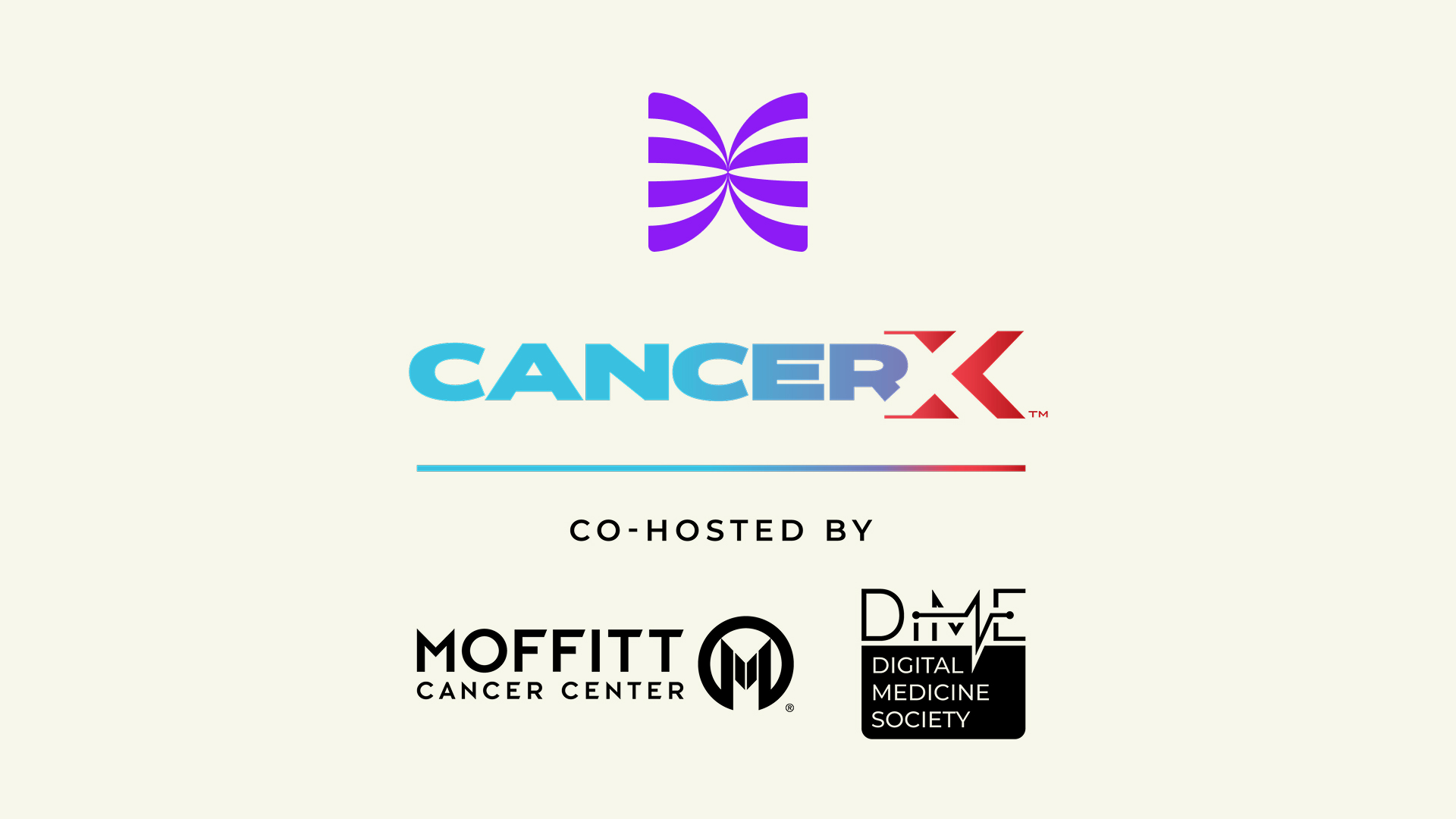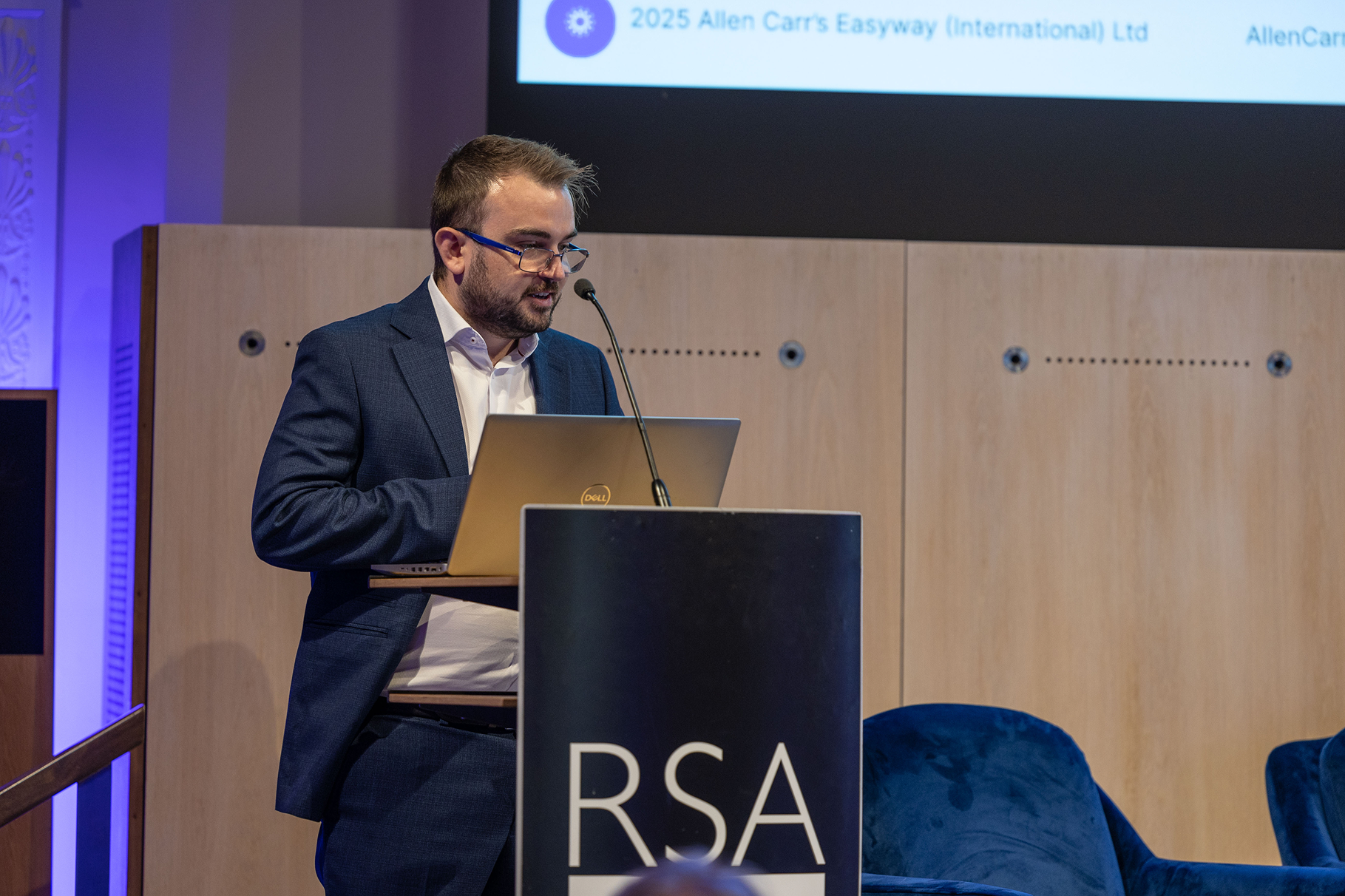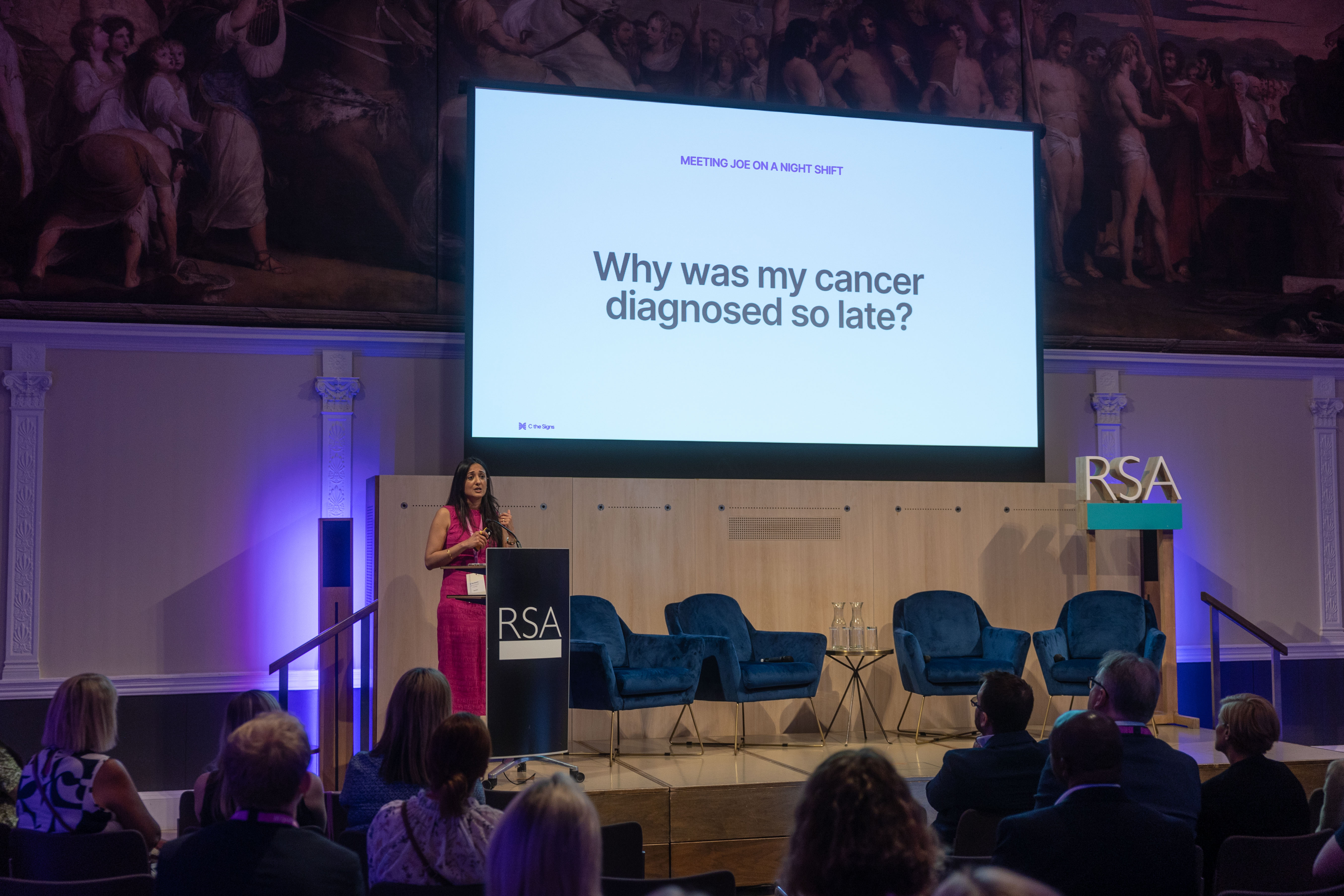
Tuesday, July 15, 2025
The Room Where the Future First Spoke, and We Chose to Listen
Tuesday, July 15, 2025
The Room Where the Future First Spoke, and We Chose to Listen
In 1877, a voice travelled invisibly across the room for the first time. It happened here, in the Great Room of the Royal Society of Arts, during the UK’s first public demonstration of the telephone. It must have felt like science fiction, and yet it became the beginning of a new reality - what was once impossible became undeniable.
On July 8th, 2025, another voice echoed in that very room. Not one carried by wire, but by mission. The voice of every patient who waited too long. Every doctor who felt the weight of uncertainty. Every family who asked, why didn’t we catch it sooner?
We gathered not to celebrate ourselves, but to celebrate impact. To honour 50,000 people whose cancers have been identified earlier through C the Signs. Not 50,000 datapoints. 50,000 human beings. And we’re only just getting started.
Be Where Your Feet Are
Opening with Sir Chris Hoy, a man whose career has been defined by milliseconds - what he offered wasn’t about loss or performance, it was perspective. A reminder that when life shifts without warning, what matters most is presence. Time with family. Laughter. Stillness. Being where your feet are. As he shared, sometimes the most radical thing you can do is to stop, look around, and be here fully for the time you’ve got.
It grounded the day, because cancer doesn’t just steal life - it steals time, and we are here to take that back.
Overturning the Status Quo
Dr Miles Payling, our Co-Founder and Chief Scientific Officer, took to the stage with quiet force. Equipped not only with numbers, but also a map - the timeline of cancer’s journey. From precancerous changes to early symptoms to late presentation, cancer doesn’t appear overnight - it evolves, and what we’ve done at C the Signs is build a platform that intercepts cancer across every stage of that journey.
Across the population, at the point of care, and directly with patients.
In just a few years, we’ve achieved what normally takes a decade in the NHS.
- Over 50,000 patients with cancer identified
- 99% sensitivity
- 94% accuracy in predicting tumour origin
- 8 to 12% uplift in cancer detection
- Stage shift across multiple cancer types, including ovarian and pancreatic
- 50% improvements in time to diagnosis
- One in four patients identified up to five years earlier than they would have been without us
We’re not tweaking around the edges - we are changing the curve -without bias, across demographics, across systems, across care settings.
Innovation on the Frontlines
Hope was alive in every session. From self-referral to safety-netting, clinicians across the NHS showed what happens when you give people the right tools.
Jessica Barton’s self-referral programme in Somerset diagnosed 33 cancers and saved 26 days of GP time.
Dr Ali Abbas Hasham digitised referral and safety-net processes, catching missed cancers and accelerating action.
Dr Bushra Khawaja tackled disparities by implementing FIT test safety-netting, achieving 100% returns and detecting cancers in groups most at risk of being overlooked.
Dr Simon Wright’s audit on PSA testing diagnosed 20 new prostate cancers, every one followed up and tracked through C the Signs.
And beyond the podium, across the gallery walls, came more stories of change - our poster presenters quietly, but powerfully showing the system evolving from within.
Dr Jesse Anthony’s work explored how multidisciplinary teamwork can transform cancer care for complex, overlapping presentations.
Helen Lavender’s quality improvement project in Barnsley offered a vision for how one practice can raise the standard of care for all patients, not just those with cancer.
Dr Clare Aitchison and Tracey Clarke demonstrated how Magdalen Medical Practice used C the Signs to significantly reduce turnaround time for urgent suspected cancer referrals.
Samuel Emerson in Suffolk and North East Essex showed what direct access diagnostics can look like when primary care is empowered to act quickly.
Dr Mostafa Esmael shared a single patient story - a case of pancreatic cancer caught early through C the Signs. That one case was a reminder that for some patients, the right tool at the right time is the difference between curable and not.
Every one of these examples reflected a system capable of transformation. One practice, one pathway, one patient at a time.
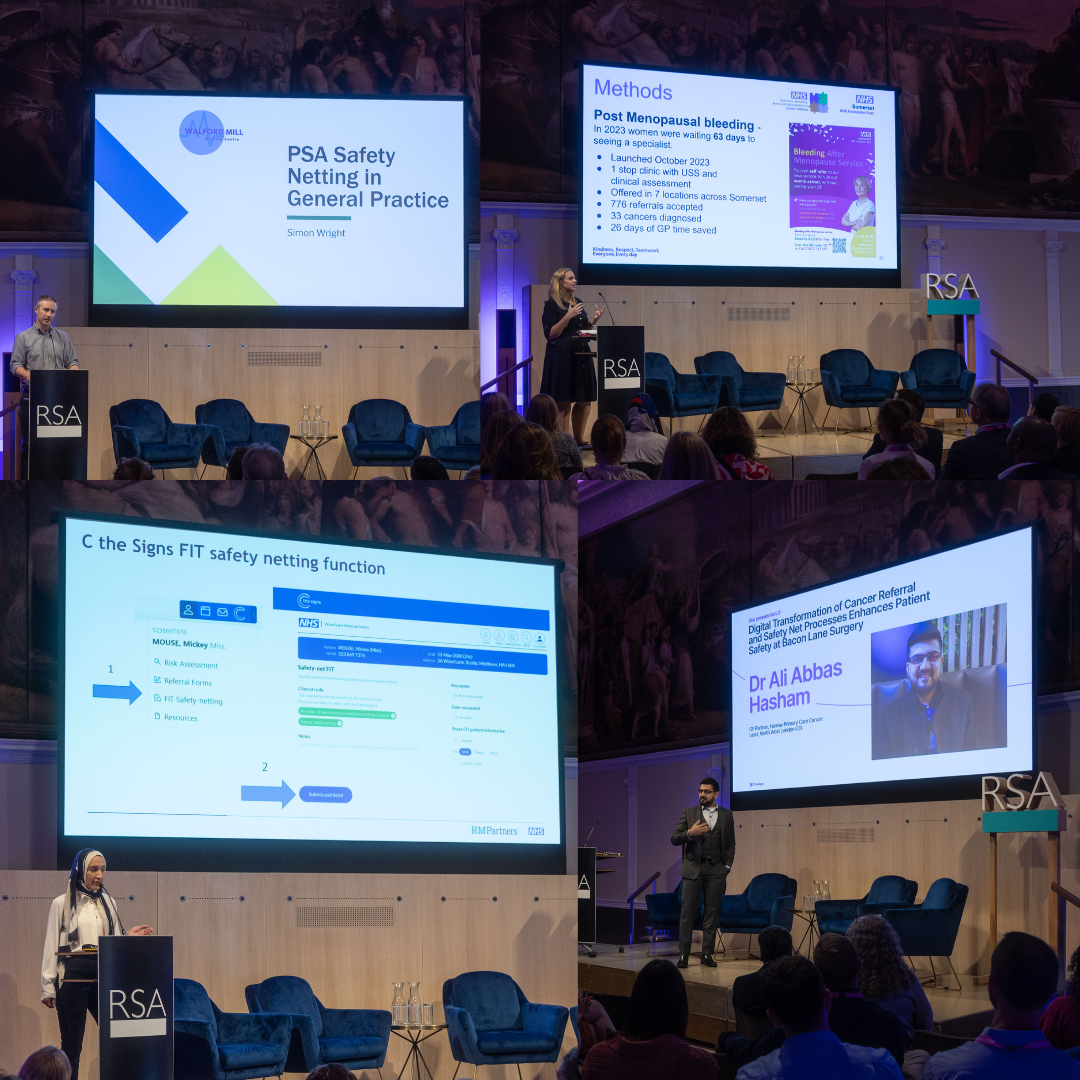
For Every Jess
And then came the moment that broke open the room.
Andrea Brady appeared as a mother first - speaking about Jess. Her daughter. Her fighter. Jess, who trusted the system. Jess, who presented twenty times before her cancer was diagnosed. Jess, who did not survive. In honour of Jess, we will be launching nationwide our response to Jess’ Rule - our promise to her legacy that we will not allow another patient to be missed. It’s not just a feature. It’s a responsibility. Jess’ GP didn’t have C the Signs, and that is the difference between too late and on time.
What Will It Take
The panel that followed brought together leaders who live the question every day - what will it take to reach early diagnosis for everyone?
Their answers weren’t abstract. They were concrete, and C the Signs is already doing them.
Case-finding: identifying patients earlier and more precisely.
Access to diagnostics: connecting them swiftly to appropriate investigations.
Self-referral pathways: empowering patients to initiate their own care.
These aren’t concepts, they’re actions. Built into our system. Enabling the NHS’s three shifts - from reactive to proactive care, from centralised to community-led access, and from siloed data to intelligent decision-making.

The Human Conversation Around Smoking
Paul Baker, Global CEO of Allen Carr’s Easyway, reframed the smoking epidemic not as a behaviour problem but as a communication failure. Smoking is still the leading cause of preventable cancer death, and yet we too often blame rather than support.
Paul reminded us that when we speak to patients with empathy, evidence, and dignity, we can change the script. Allen Carr’s method has shown 25% quit rates at one year - drug-free. It’s time we get serious about supporting every patient to become smoke-free, no matter where they are on their journey.
A Life's Work, Still in Motion
The final session brought us into conversation with Professor Sir Mike Richards, Chair of the UK National Screening Committee and one of the most transformative leaders in cancer care.
He spoke with hope, not hesitation. Yes, we must hit the 28 and 62-day standards. Yes, GPs need direct access to diagnostics. Yes, we need AI systems that guide patients swiftly and safely to the right pathway.
But most of all, we must support primary care. This is where patients present first, and for decades, we haven’t given them the tools they need.
Sir Mike spoke not just as a policymaker, but as a doctor. He shared how one patient, seen before there were MDTs, before there were national standards, ignited his career-long commitment to push the system further. From oncologist to National Cancer Director, his mission remains the same - do right by patients, do it early, and do it better.
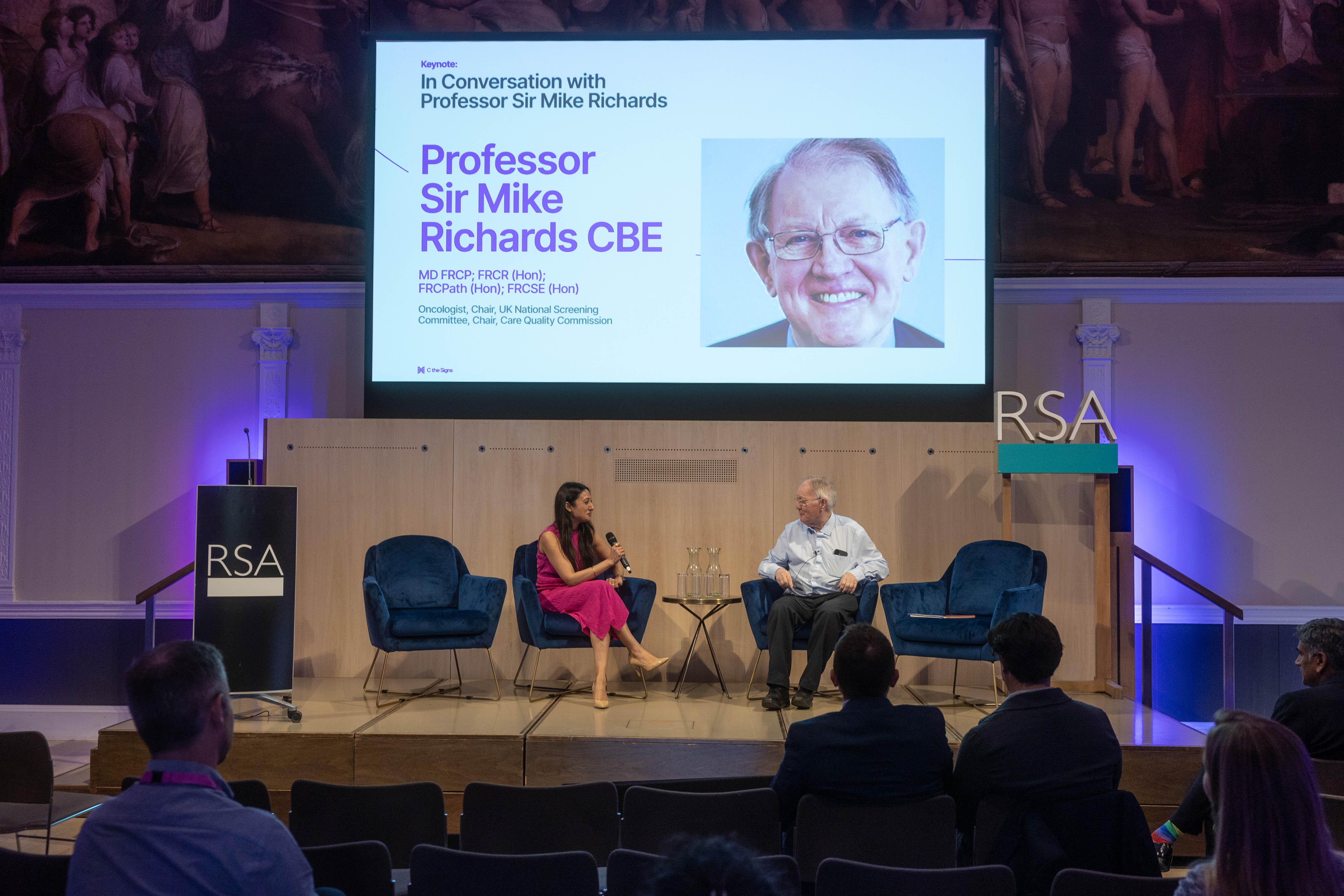
The Moment That Changes Everything
We built C the Signs because of Joe - a man I met on a night shift who had already waited too long. We lost him. But his story, like Jess’, lit a fire - not just in me, but in all of us. A fire that became a company with a clear purpose: to change the system so no one is missed again. That purpose is now a platform, and a movement.
Because every patient we lose too late started as a patient we could have seen sooner.
Every moment of hesitation is a moment we can redesign.
Every missed opportunity is a signal we can learn from.
Every delay is a life that deserved more time.
We are here to find that moment.
To never miss it again.
And as we stood in the Great Room where the future first called, we didn’t just listen. We answered.
With science. With empathy. With urgency.
For Jess. For Joe. For the next 50,000.
This is how we win.




.png)
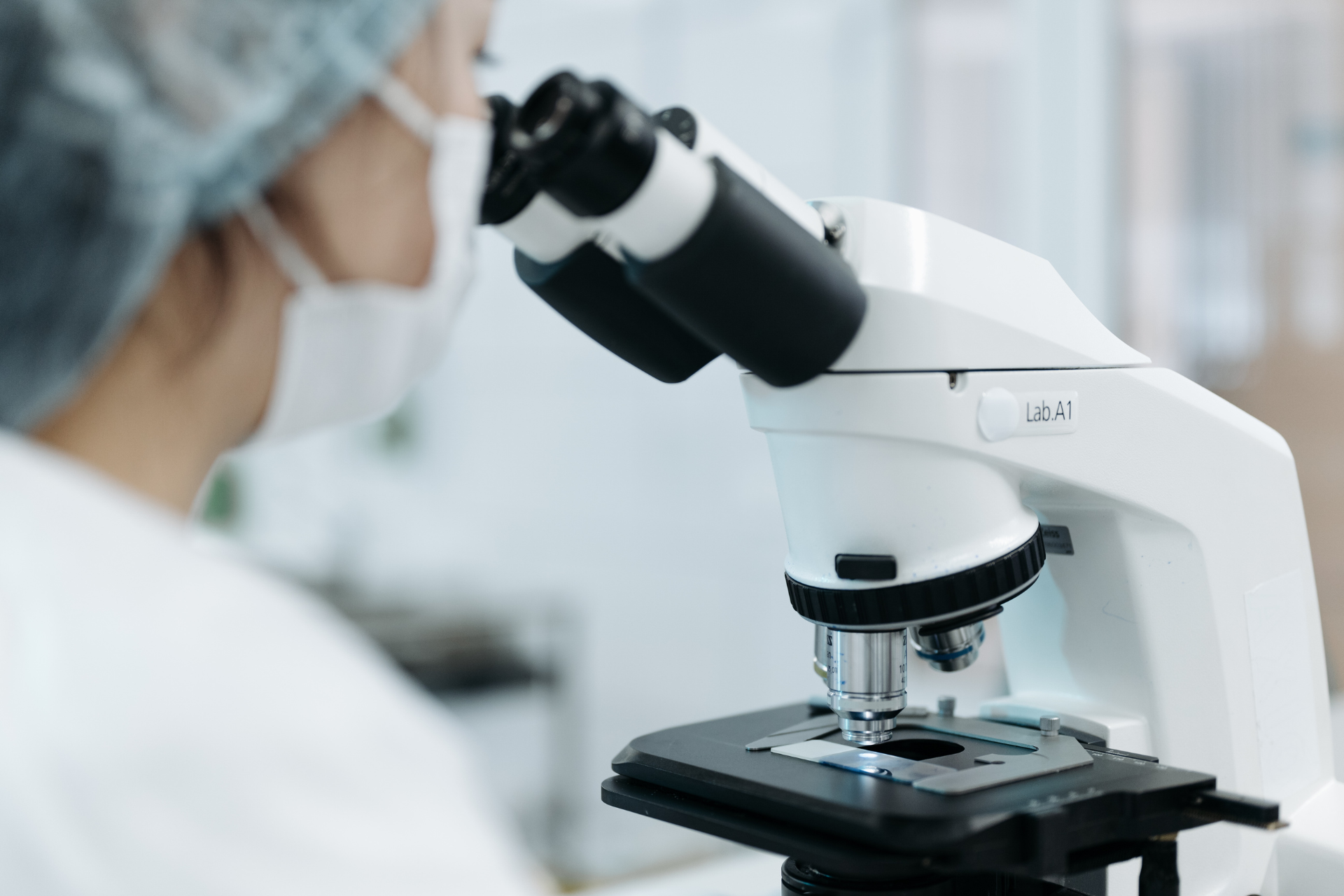
.jpg)

.jpg)
.jpg)

